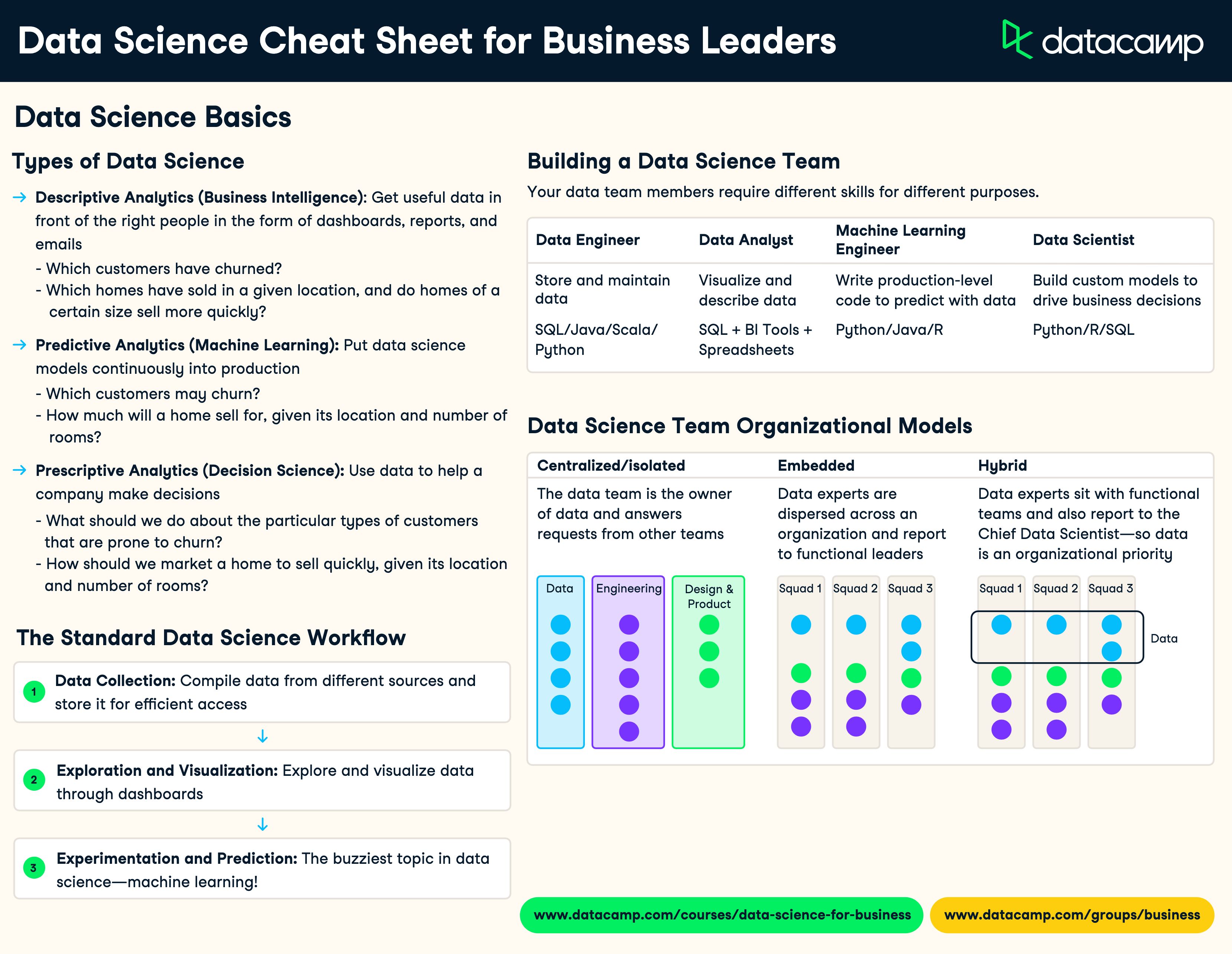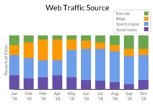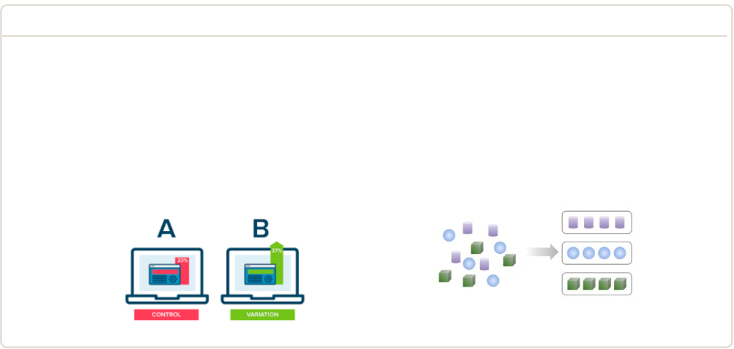Data Science Cheat Sheet for Business Leaders
This cheat sheet guides you through the basics of how data science can help your business, including building your data science team and the common steps in the data science workflow.
Oct 2019 · 6 min read
RelatedSee MoreSee More
blog
[Infographic] Data Science Learning Checklist
Use this handy checklist to guide your data science learning journey.
DataCamp Team
4 min
blog
The Complete Guide to Data Literacy
Discover why data literacy matters and learn how it can help your team thrive in an increasingly data-driven world.
Kurtis Pykes
14 min
blog
What is Data Literacy? A 2024 Guide for Data & Analytics Leaders
Discover the importance of data literacy in today's data-driven world.
Matt Crabtree
21 min
cheat sheet
Data Storytelling & Communication Cheat Sheet
In this data storytelling and communication cheat sheet, you'll learn about best practices for crafting data stories.
Richie Cotton
6 min
cheat sheet
Python For Data Science Cheat Sheet For Beginners
This cheat sheet covers the basics that you need to know to do data science with Python
Karlijn Willems
1 min
cheat sheet
Data Visualization Cheat Sheet
In this data visualization cheat sheet, you'll learn about the most common data visualizations to employ, when to use them, and their most common use-cases.
Richie Cotton
5 min






 Looker
Looker  When you'll use it multiple times
When you'll use it multiple times  When you'll need the information updated regularly
When you'll need the information updated regularly  When the request will always be the same
When the request will always be the same 